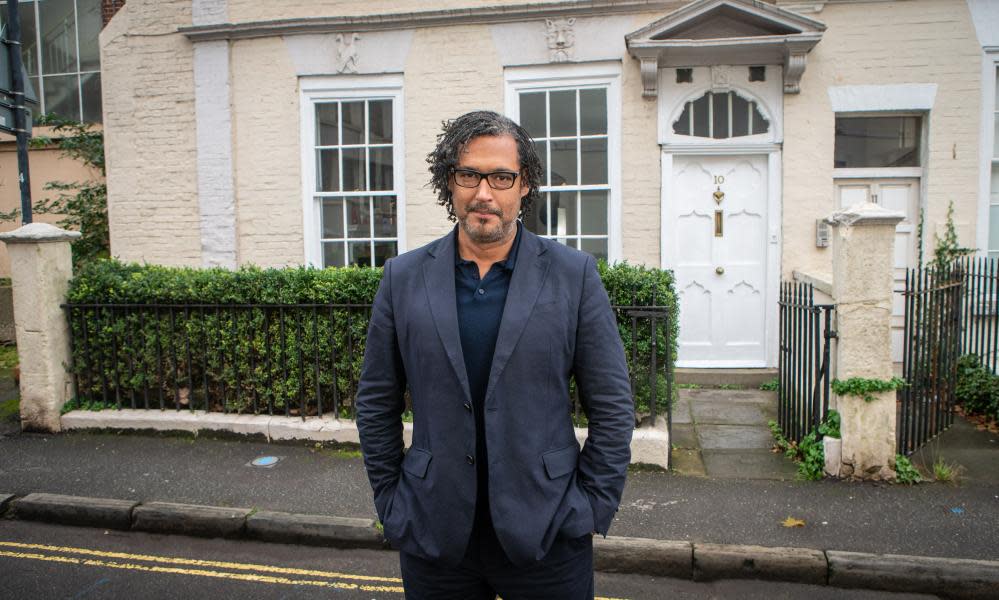A House Through Time review – an absorbing, important history lesson

A House Through Time (BBC2) has always been an oasis of calm. Partly because of presenter David Olusoga’s permanent air of absolute tranquillity (some people may find it bordering on soporific – I feel more as though he’s enabling me to let the edges of the scene blur and melt) and partly because its subject – unlike the messy humanity of Who Do You Think You Are? – is essentially neutral. The house whose history is under discussion is blessedly silent. It is the place to which we all return after the story of each of its owners or tenants is told, to gather our thoughts, digest what we have learned and mull the wider implications before setting out again down a new avenue.
For series three, the focus is on an older house than usual. Number 10 Guinea Street in Redcliffe, Bristol – Olusoga’s home town since the 1990s – is a gracious three-storey (plus attic, plus basement), ornately plastered, beautifully panelled and flagstoned pile built, along with several others, by a Captain Edmund Saunders in 1718. And, like most gracious three-storey piles built by sea captains in Bristol in the 18th century, it was funded by fortunes made from slave trading.
Saunders was one of the most prolific buyers and sellers of people at the time. Olusoga (and his researchers) linked him to over 40 voyages ferrying 12,000 souls from their homes in Africa to their indentured lives in the Americas. He never lived in the house but rented it to its first occupant – another slave trader, Captain Joseph Smith. According to newspaper reports in 1721, Smith’s ship was captured twice by pirates (the same ones) and he and his crew were cast adrift in a rowboat after it was looted and set on fire. Somehow – the records do not show how – he made it the 5,000 miles home. A few years later he bumped into one of the pirates, Bridstock Weaver, who appears to have been a “forced man” – ie himself enslaved by the real pirates and probably known to be such by Smith. Nevertheless, after a failed attempt to extort “restitution” from Weaver, Smith had him arrested and Weaver was sentenced to hang. The record of a pardon instead of execution shows that at least one tiny measure of the suffering inflicted by Smith during his life was averted.
A foundling baby left on his doorstep (Smith and his wife refused to take her in and she died at the age of three in the presumably negligible care of the parish) took us down the highways and byways of poor laws and options (or lack thereof) for the vulnerable in a time long before the welfare state.
The next owner, John Shebbeare was a Tory political satirist and everything that implies – the kind of pain in the arse whose type can be recognised down the ages. One of his hobbyhorses was the “national ruin” brought about by the Hanoverian kings, another was the uselessness of women in general (“The best I ever knew is not worth the worst man”) and his wife in particular (“I think I have been yoked for about one and 40 years and have wished my wife underground anytime since”). He died in 1788 – about 10 years after his wife, alas, who must have got no peace in this life, but at least before he could set up a Twitter account.
After him came the Holbrooks, who made their fortune from slave-run sugar plantations and kept a black servant, Thomas. A notice offering “a handsome reward” for Thomas’s return, after he apparently fled 10 Guinea Street in 1759, is the only surviving record of his life. Whether he was caught and returned, caught and sent back to Africa as a slave as punishment, or made it to a ship that offered the comparative freedom of life on the high seas we will never know.
Like Who Do You Think You Are? – and the likes of the wonderful The Secret History of Our Streets a few years ago – A House Through Time does what it does very well. It is history humanised and made accessible and though it does not go into much detail, that is different from being oversimplified. There is room to breathe. What it covers, it doesn’t rush through. And Olusoga always clears a little imaginative space for the lives – such as that of Thomas here, and for those of servants and women in other episodes – that go undocumented, paying tribute to the unsung labour and silent sufferings of those who never make it into the records but upon whose backs so much of what endures around us was built.

 Yahoo News
Yahoo News 
